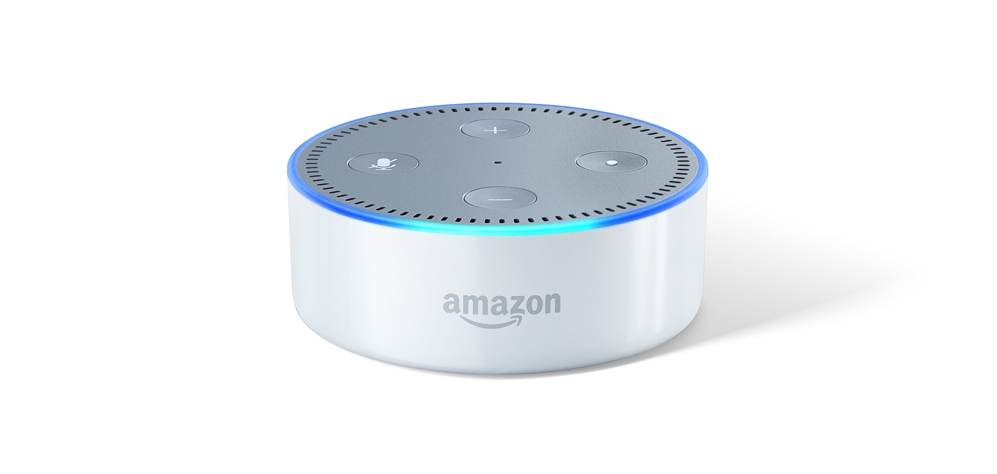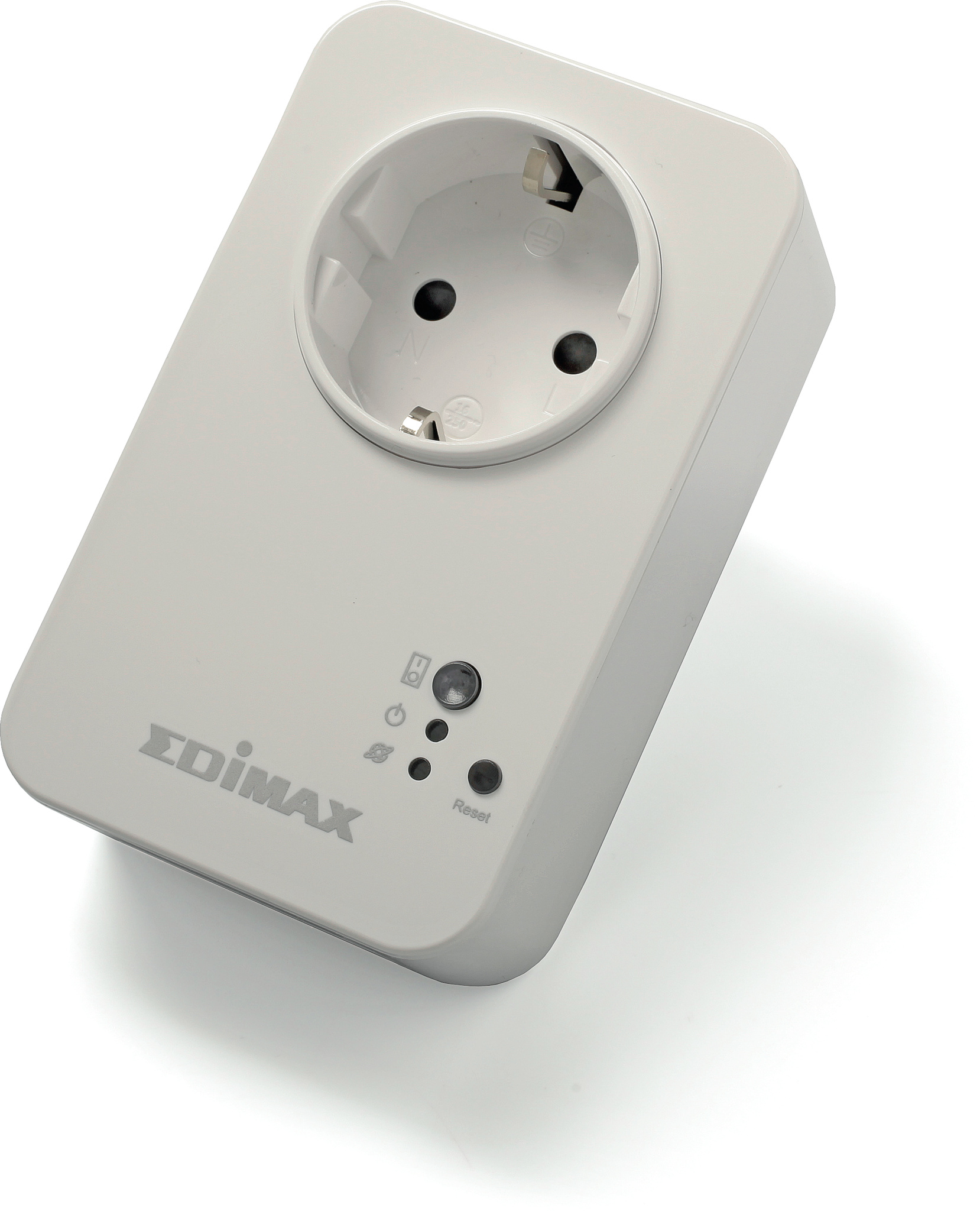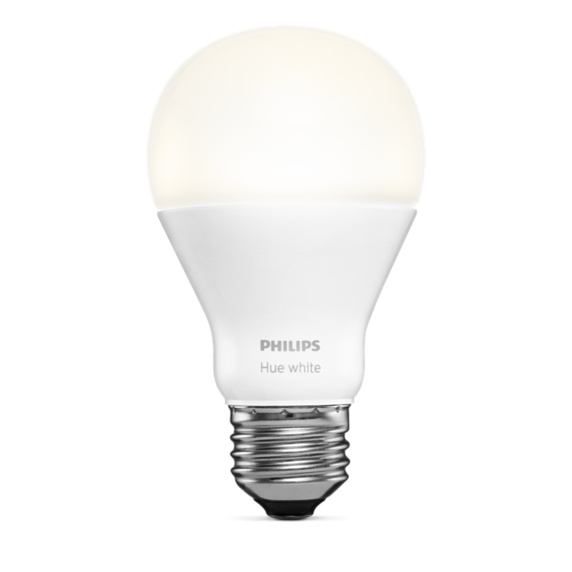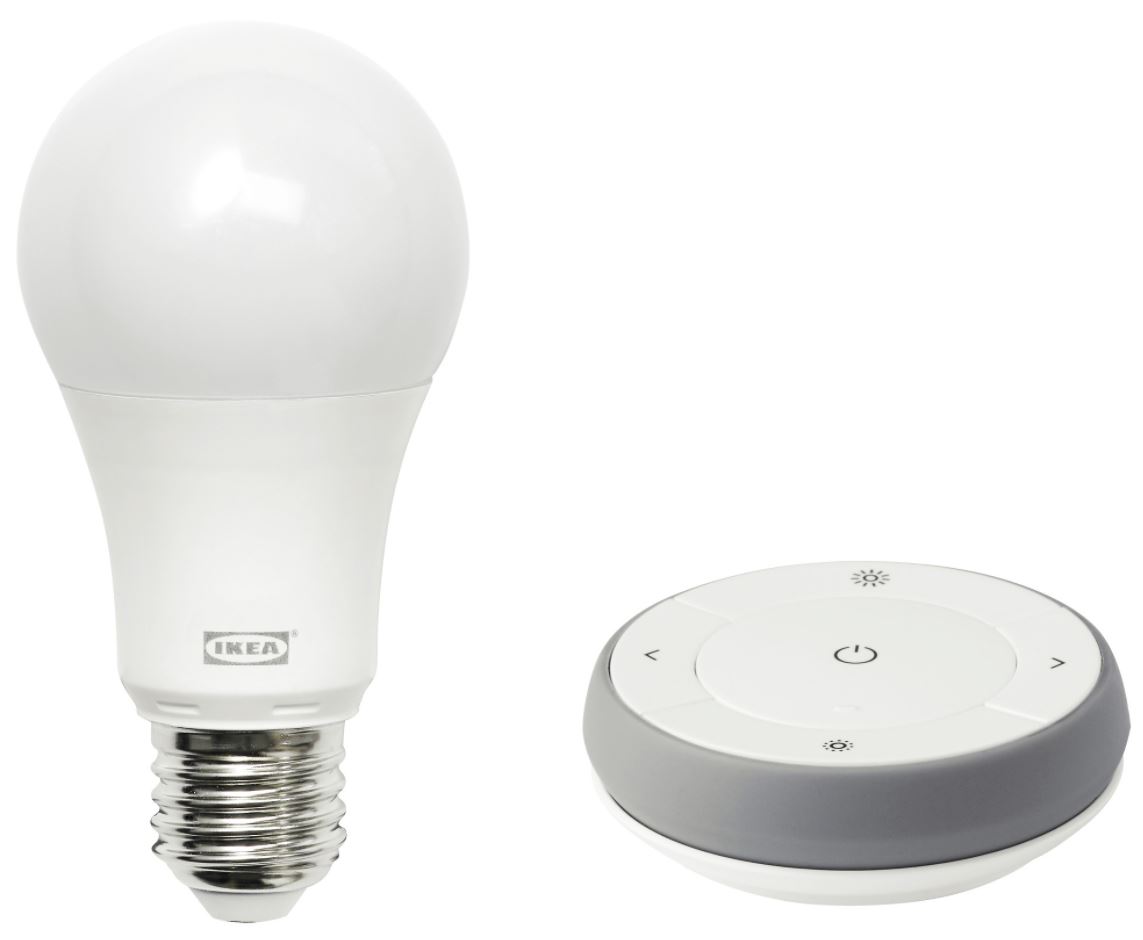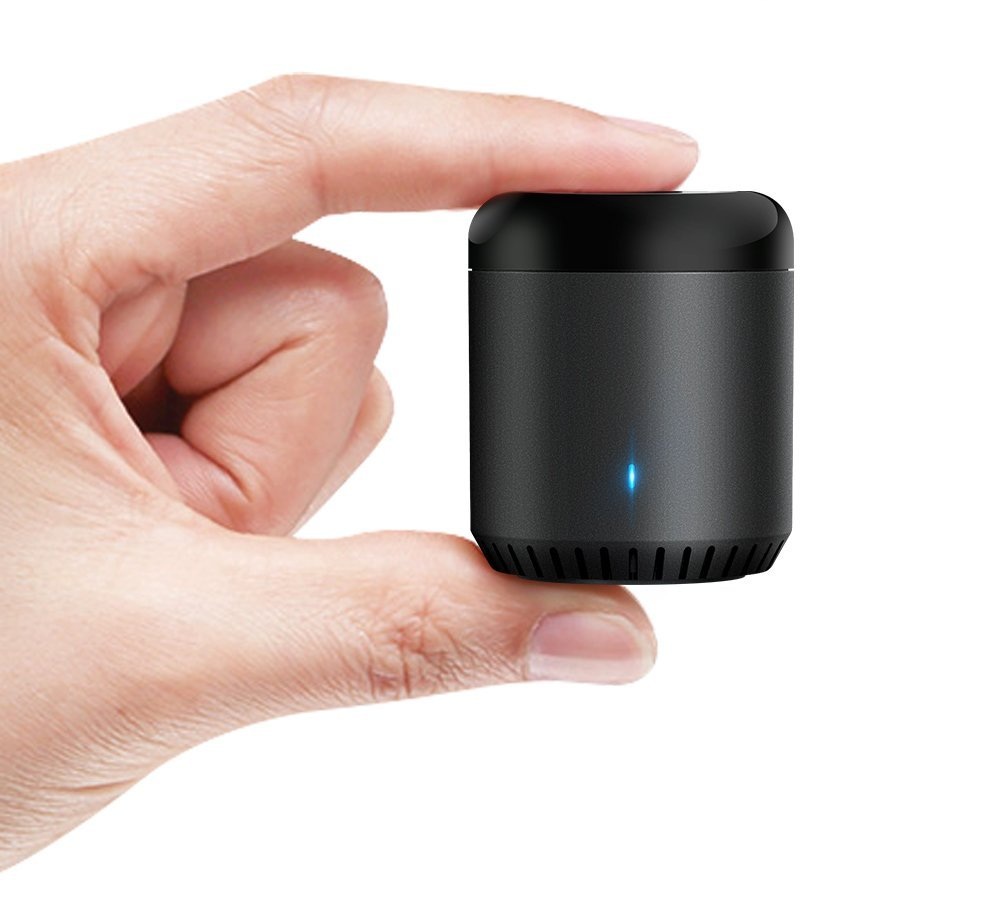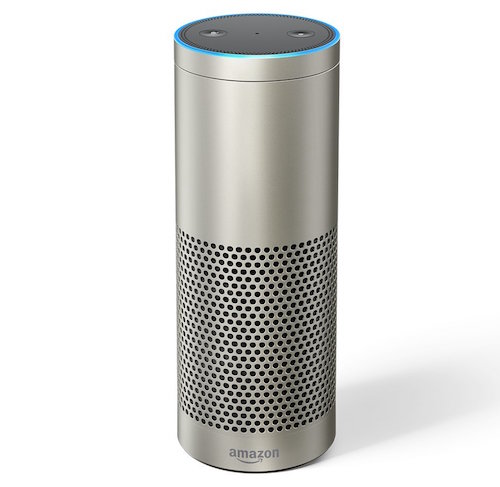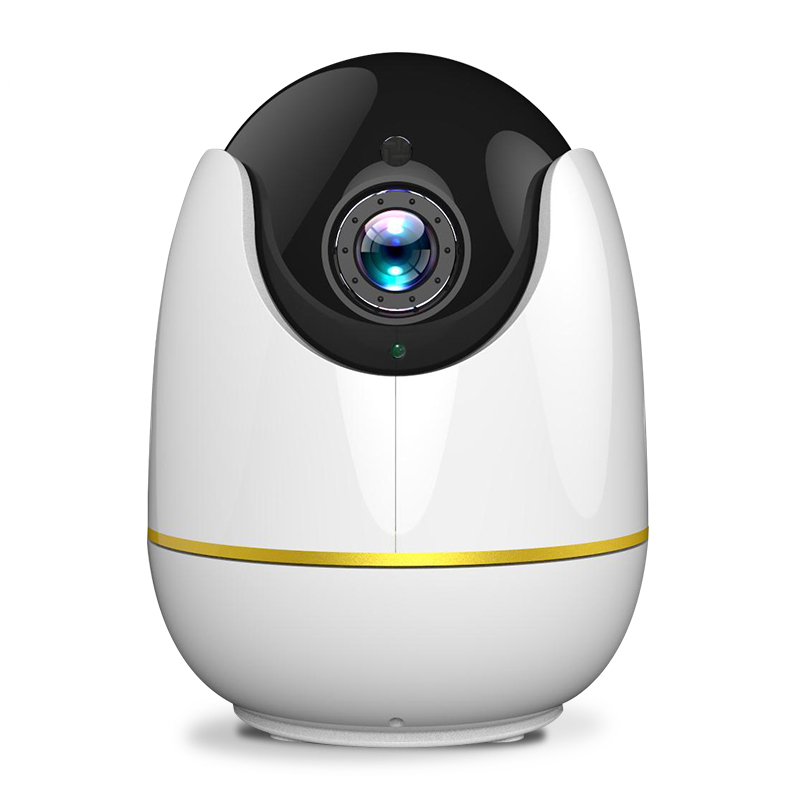Smart home is well known and widely distributed, so I don’t have to explain it in depth. In principle, it is the control of things in the house that you normally had to do by hand, e.g. Garage door on/off when approaching, automatically adjusting the heating temperature at night, lighting situations e.g. for TV, food, reading, shutters to close automatically etc…
So far so good, it will of course be interesting when you think about how all this should be controlled, by remote control?
There are numerous vendors that provide smart home systems that can manage a variety of sensors and actuators, but you can be sure that something you wouldn’t like is provided. Of course, you will not notice this until later. Ultimately, meta-solutions are probably necessary, i.e. Smart home systems that are open to other standards, e.g. the open source solution OpenHab.
Remote control or control of all smart home systems via PC and app is possible, but too cumbersome in the long run for recurring tasks.
There are these methods that make sense in daily dealings:
- Input via app for special tasks
- Voice
- automatic rules (IFTTT – IF THIS THAN THAT) or Conrad Connect (partly chargeable)
I then describe the voice input via Amazon’s Alexa (Echo Dot and Echo, respectively. Echo plus):
Amazon’s Alexa is an artificial intelligence that is enabled on voice command and can execute commands.
This is also the most important limitation: Alexa can turn the light on/off, but she doesn’t get a message if you make it yourself. This means that sensor events do not push a status message into Alexa.
Alexa is mainly a SPEECH input. Amazon is up to now not good in making buttons, remotes or toggle switches.
So if you want to trigger an alarm automatically by a motion sensor, Alexa usually does not understand when the motion detector is activated, as this detector usually works with its own HUB. In recent times some motion sensors can report now directly to Alexa and amazon came with its own device, the echo flex, which is painful to use. So expect Alexa to be mainly an command driven environment.
Switchable sockets
I have had switchable sockets from Edimax (Ediplug 1101W) for years, before alexa and wanted to integrate them.
There is no “skill” (software plugin) for Alexa for these sockets, so they are not switchable by Alexa. (Note November 2017, there will now be an Edimax Skill, I will examine, check, see next section)
For the next generation of my Edimax sockets (now with current measurement) there is a hack via an OpenHab2 server on Raspberry PI. Is too expensive for me at the moment, I do not have the follow-up generation and they are also very expensive at 50 EUR per piece. So I first brought them to my storage chamber.
Supplement July 2018:
There is now a firmware update for the old sockets, so they are supposedly responsive with the new EdiSmart Skill for Alexa, I updated them, which was time consuming and went only at 4 out of 5 pieces, despite all efforts. The fifth is broken and not reacting at all and has been disposed of professionally.
The Edimax app (2018) is not only a disaster in this respect, it is also poorly programmed and some parts of the interface is in Polish language, German does not exist with the current version. The app sends annoying notifications when switching the states, which can be deactivated if you click on the connected device in the app and click through the polish options of the time control and other options that appear.
(Note 2019: the polish problem is fixed in the meantime, pairing mode of the devices in the Edimax app is still tedious, it’s easier if you 1) temporarily turn off any other auto-selected Wi-Fi connections so that the smartphone can be temporarily turned off when setting up the device in the same Wi-Fi network remains, and 2) the device switches to pairing mode and then selects the new network of the device, which now appears in the WLAN selection, by hand in the smartphone)
2018: After installing the EdiSmart skill on Alexa and linking to the Edimax app, Alexa can’t find my German-named sockets (plugs1), with English naming already. I think you have to make clever choices of words again, I already know that from other skills.
(Note 2019: meanwhile also this is possible, only, I forgot to mention Alexa can not find the sockets directly in the Alexa app, but you can only address and find the devices via the Edimax Skill in Alexa, i.e. the command is “Alexa sag Edimax turn on socket”. Thus, you can’t set up groups or routines with the sockets in Alexa, because they don’t show up there as devices. Is there a detour? Since IFTTT and YONOMI and CONRAD CONNECT do not know edimax/edismart, there is no detour. Possibly via OPENHAB, but that’s still not set up for me.)
So EDIPLUGS and all other EDI devices are crap and unusable for meaningful tasks in the voice-controlled smart home.
Back then (2016-2017) I bought 15 new S20 sockets from Sonoff at a 5th of the price (10 EUR/pc) over banggood.com as a solution to my original socket problem.
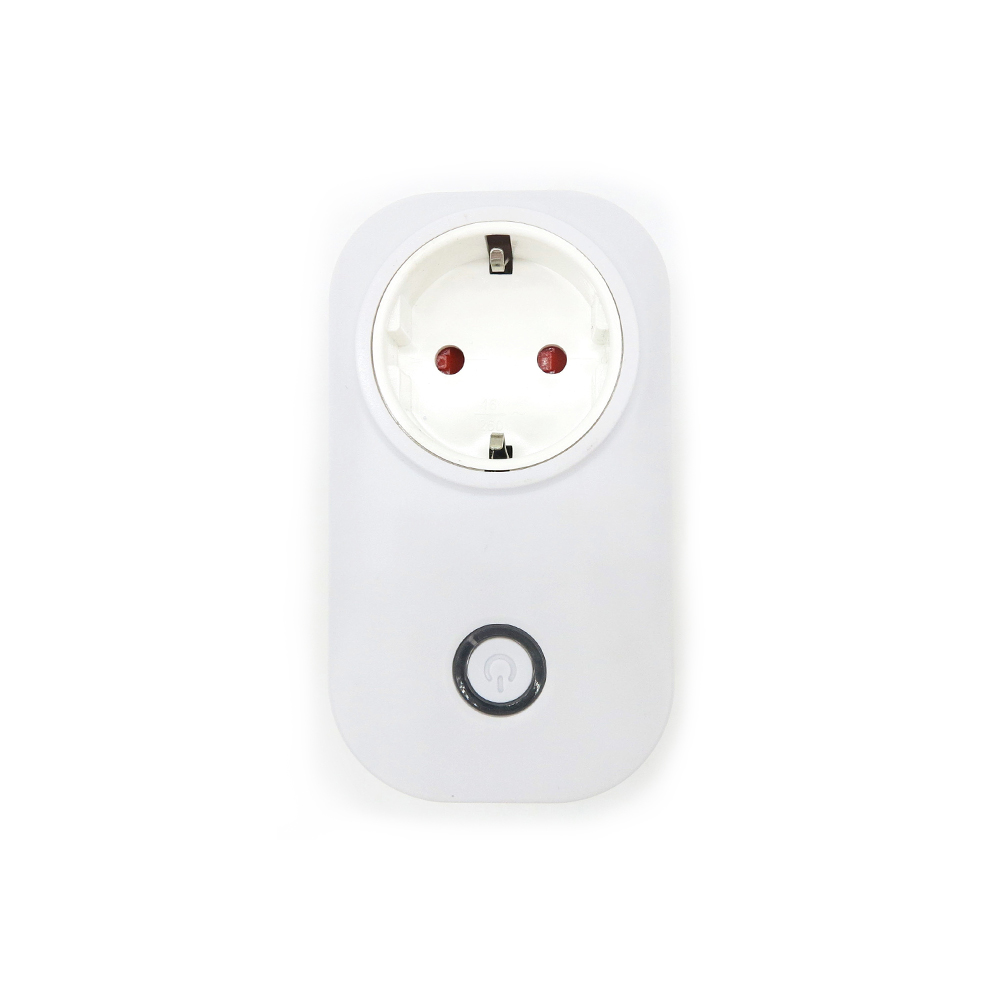 These can be integrated into the WLAN home network via the manufacturer’s eWelink app and can then be contacted in Alexa with the eWelink skill that can be activated there. This works very well if you give the sockets common names, e.g. “Living Room” or “TV” or “Reading Light”. Unfortunately, the socket reports every use via the eWeLink app to China, I would rather keep this information in the house, moreover, the eWelink service sometimes does not work.
These can be integrated into the WLAN home network via the manufacturer’s eWelink app and can then be contacted in Alexa with the eWelink skill that can be activated there. This works very well if you give the sockets common names, e.g. “Living Room” or “TV” or “Reading Light”. Unfortunately, the socket reports every use via the eWeLink app to China, I would rather keep this information in the house, moreover, the eWelink service sometimes does not work.
Solution: if you can hack the Sonoff socket, add a new firmware, then it behaves like a Philips Hue Bridge (yes, right, like a Hue Bridge/Hub and unfortunately not like a Hue light) and is recognized and embedded by Alexa in the Echo Plus without any skill or app. This works very well, so from Alexa’s point of view about 10-15 Hue Bridges are activated.
https://github.com/arendst/Sonoff-Tasmota/wiki/Sonoff-S20-Smart-Socket
Open the connector housing, unscrew PCB, solder 4 pinheaders, connect to PC via USB adapter and flash the Tasmota firmware with Arduino IDE. In userconfig.h set network data and at least your own Friendly Name, Philips Hue Emulation. Remove the cable, screw it off and then plug into the socket and search in Alexa.
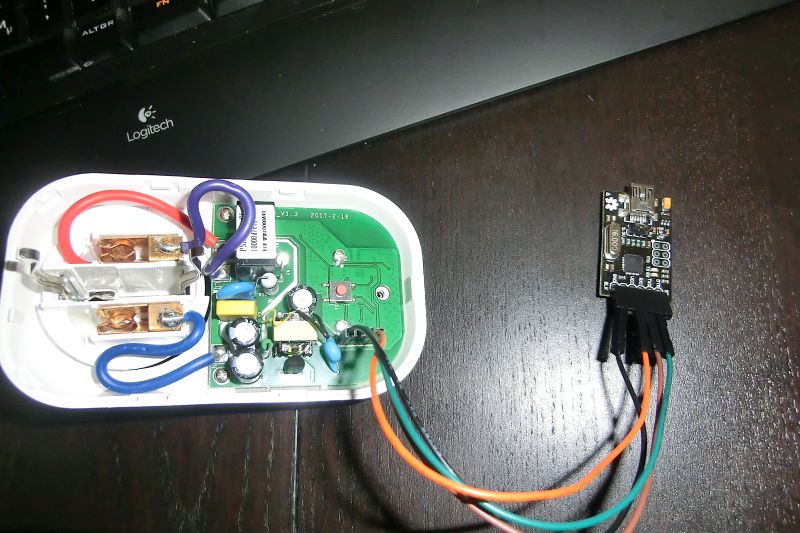
At least I can now turn a number of devices on/off by voice.
Since November 2017: Alexa can now control all devices that are integrated via it, whether on the internal hub or via apps with simple routines, e.g. Timed. This is quite cool, because now you can set lamp groups with different dimming values per lamp by routine, by voice command or time-controlled.
Note 2019: Several Alexa updates seem to make the management of the hacked sockets (which log on as Hue Bridge) getting less reliable and the socket names are getting confused, i.e. in fact incorrect devices are switched on and off. I tried to reload the original firmware, but failed, don’t know why. So heavy heart, the Sonoff sockets are exchanged for original Sonoff sockets and these are well integrated via the eWelink app. Goes excellent again so far, they appear in all lists and routines and switch reliably). There is a new smaller version of the Sonoff Socket now and I replace the old versions form time to time if they seem to work not properly.
Light
Alexa can now use the Echo Plus to connect the Philips Hue lamps
and the IKEA Tradfri lights on/off directly and without their expensive hub and without an external app. (The Tradfri luminaires are available in warm white, or in warm to cold white adjustable, and in color. I find the solid warm white too yellow and therefore prefer the slightly more expensive but adjustable luminaires).
As mentioned above, Alexa does not understand push commands, so no external switches, dimmers or motion sensors from these series go directly. To do this, you always need the app (and always – unfortunately – the respective hub/gateway)
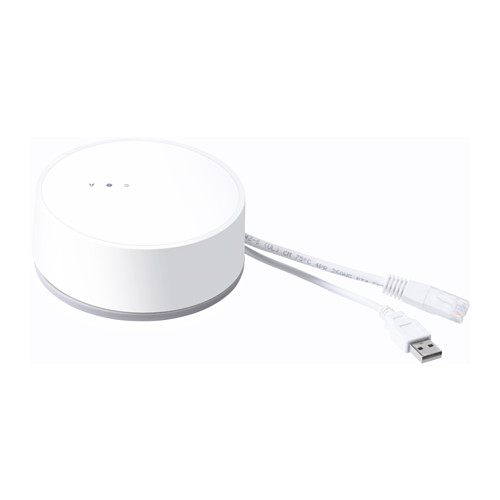 The Tradfri Hub (Gateway) costs 30 EUR and can pack the various luminaires and a control element into a group (each with a maximum of 10 devices) with the corresponding app from IKEA. Such as. are then a motion sensor and 2 lights in a group “gang” and a dimmer with 4 lights in a group “living room”.
The Tradfri Hub (Gateway) costs 30 EUR and can pack the various luminaires and a control element into a group (each with a maximum of 10 devices) with the corresponding app from IKEA. Such as. are then a motion sensor and 2 lights in a group “gang” and a dimmer with 4 lights in a group “living room”.
The light setting of the motion sensor is not good for me, I have not been able to adjust the sensors in such a way that the light is reliably only at night. The light sensitivity controller of the Tradfri motion detector seems to me to have only two settings: 1) full (so always) and 2) unpredictable.
The Tradfri app can NOT yet be conditions (e.g. ignore motion detectors during the day) and is actually only necessary for configuring the groups, manually switching on/off and dimming and for updating the firmware of the devices. The app does not start if no hub from IKEA is found. The light control is also not possible.
According to the manufacturer, only ONE control unit can be allocated to a luminaire, i.e. a lamp can be controlled either by a dimmer or a motion sensor, but not by both. This is a problem going on, because when you enter the aisle from one side, where the motion sensor is, the light is automatically switched on, you enter it from the other side you stay in the dark.
So again the problem: Let’s assume you have a hallway with two lights. Furthermore, you have two motion detectors to detect movement on both sides of the aisle, so that light always switches on, whether you enter the aisle from one side or the other. According to the manufacturer, you can only help yourself by attaching one motion sensor to one lamp at a time, i.e. the aisle is not fully illuminated when you enter it.
But there is an undocumented behavior that helps (see findings June 2018).
The Tradfri Skill is available for Alexa, but is not known in IFTTT (May 2019), even not with Conrad Connect and Yonomi.
The Tradfri luminaires are visible in the Alexa APP and can be grouped together and with other devices.
The Tradfri Gateway can also detect Philips Hue lamps (at least the White) and the Tradfri control units (one per lamp) can be connected to the Philips lamp.
Findings (April 2018):
Tradfri is quite good, you need the IKEA Tradfri Gateway despite Echo Plus. For me, it crashes every x weeks, which means that none of the automatic routines or voice commands go over Alexa anymore. It only helps to disconnect from the electricity, wait a little and start up again. I am considering whether I do this via my own voice-controlled socket, then can reset from anywhere or routinely controlled if necessary.
Note 2019: although I always automatically reset every night, the system gets stuck every now and then, i.e. Lights no longer go on or off. Usually a cold start of the Tradfri gateway helps and switch the lights via the app to “catch” them again. In the worst case, the physical light switch to completely separate it from the current.
It is a hindrance that (2018) Tradfri does not allow any conditions, e.g. timed behavior. This could be solved via Alexa routines, but because of the limited range of functions, there is no timer or (daily) time.
Note 2019: Timers are now working in Alexa app routines.
IFFT and CONRAD and YONOMI still do not know the Tradfri. So no conditions are possible, such as if motion sensor is activated by Tradfri, then also do something other than just light.
I’m about to hack Tradfri, just don’t have time at the moment….
Findings (June 2018):
Connection of two motion detectors with a luminaire or Luminaire group:
I assume you have new devices that have not yet been configured or reset to factory state and NOT known in Tradfri app.
1) Log in one and ONLY ONE motion detector at the gateway, mark it after logging in. It must then also appear in the Tradfri app. The second one must NOT be logged on to the gateway otherwise Tradfri packs it into a new group from which you can not get him out.
2) Turn on a lamp and connect it to the motion detector, it pulsates and must then go out.
3) Go to another, preferably dark room and take both motion detectors with you, hold them together so that you can see the bottom of both, press the buttons simultaneously and long and watch the red light in both detectors until both have been extinguished. Now the second motion detector in the app is listed in the same group.
Note July 2019:
In the meantime, you can simply log in a second motion detector in the Tradfri app by dragging it into the room where the other motion detector and the lamps are located. If it cannot be pushed, then push the other motion detector and the lamps into its room and then, after deleting the empty space, call it correctly again.
Security
None. All switching signals are sent to the companies of the respective apps.
Thus, my turn-on of the TV is currently reported to AMAZON and eWelink, the switch to the Firestick is then reported to LOGITECH and IFTTT.
Turning on my light goes to AMAZON and IKEA.
Ultimately, Alexa sends everything to Amazon, including the recorded voice commands, which goes through the press again and again.
The system would be less susceptible and data-safe if third-party apps are not needed, but without them it is hardly applicable.
It would be better to log in all smart home components exclusively via the GAST NETZWERK from the router, because then you can separate them from your own network and deal with any security problems in a targeted manner. But I can imagine that this is not so easy, because the smartphone remains in the normal network and could give a KuddelMuddel in case of problems or (firmware) updates between apps, Alexa and devices.
Infrared remote control
Alexa can only switch and control devices that are attached to the Wi-Fi network, or with the Echo Plus also devices that represent the Zigbee standard, such as Philips Hue lamps, IKEA Tradfi lamps.
If, for example, you have you need an amplifier/tuner/DVD player with infrared remote control for this purpose. I use the approx. 100 EUR expensive Logitech Harmony Hub.
The hub can also connect to Bluetooth devices (I don’t have any application for this) and control a few (!) selected systems over Wi-Fi.
It cannot find or control Zigbee standard devices, so it cannot find or control Hue or Tradfri lights.
The Harmony Hub can be configured and controlled via Logitech’s Harmony app (complex actions can be defined), but the most important thing is that Alexa can launch the actions by voice, and there is a free harmony skill for Alexa. (but speech recognition is running very poorly…)
In the Harmony app, you can enter actions that send remote control commands for multiple devices in succession, e.g. Switch the TV, tuner and amplifier from standby to operating mode, select the correct inputs and set the transmitter. You can then start the whole thing with a single voice command through Alexa. If it is too loud or too quiet for them, you can regulate this with voice command, so you can also change the transmitters.
Theoretically.
The main drawback of the Harmony Hub is that it
1) can’t turn on power outlets (at least he can’t find my Sonoff sockets) which means that you have to turn on the power outlet via another application so that the device has power and then be remotely controlled by the Harmony Hub via infrared.
2) he can’t find Any Hue or Tradfri lights as it does not support the Zigbee standard
3) He finds the Philips Hue Bridge but not the IKEA Tradfri Gateway
In practice, you can enter these actions with some difficulty via the app, but Alexa hardly understands the commands (e.g. I never managed: “Alexa, turn on the music stick with Harmony” to select and start the USB stick on the receiver).
Conclusion:
the Logitech Harmony Hub is conditionally used as an infrared remote control replacement, but the voice commands are poorly understood. The Harmony Hub is important, because otherwise many devices cannot, for example, switched to the correct input. Maybe there is another infrared solution, I don’t know and now I have the Harmony Hub.
When you talk to the Harmony Hub about IFTTT, it’s much better understood.
Supplement July 2018:
In the meantime, I tried the small and very cost-effective IR transmitter from Broadlink (RM-mini) and found the following:
The app logs in quite badly to me and murmurs because of internet problems. I like them otherwise quite well, you can also enter quite complex scenes and edit conditionally.
BUT: there is no way (except through the knee) to let the RM-mini be controlled by the Alexa. IFTTT does not know broadlink and the English-language skill for Alexa has not been translated into German for some time and is therefore not approved by Amazon for Germany. Too bad, I would have liked to have switched to the little one.
Addendum: Allegedly supports Conrad Connect Broadlink. Whether this model and how and whether free, I will check soon.
Now to my Alexa hardware:
Echo Dot is the small version with simple loudspeaker and extra jack output for connection to the domestic stereo
Echo (second generation) is the big brother of the Echo Dot, with two built-in speakers but no extra output of the audio signal, the third generation Echo plus was released in November 2017 and like an echo, now with audio output and built-in Smart Hub on Zigbee Base:
If you insert a jack plug into the jack of the Echo Dot or Echo Plus, the internal speaker is switched off (unfortunately by software, you can’t just hack hardware… I tried…). Now, for example, Internet radio or music sent by voice command to the stereo via cable, but also all confirmations of Alexa. If you use Multiroom mode on multiple Echo devices, you can hear the voice in all rooms. This is known on Amazon, but not a priority in progress, as a solution could probably lead to more service. A subtle sound from the device for OK and error would suffice for me. You can already see this via the illuminated ring, but Alexa is not always in sight, respectively. in the field of view.
Spach detection:
It’s amazing how well and how badly it works at the same time. Only mass-produced words are known, and sometimes you have to emphasize the words differently so that Alexa understands them. I did not manage to play a specific song or album of my choice by voice command, probably my collection is too exotic. She can’t find my own pieces of music despite the best name and careful tagging. A word she doesn’t know doesn’t understand and doesn’t learn.
Interestingly, she doesn’t understand the same words with Logitech Harmony, but with IFTTT she does.
In the living room is also my TV set. It happens again and again that Alexa (Echo Dot in the living room) talks like out of nowhere nonsensical stuff when she has heard something on TV that she considers to be input. The word “Alex” or “Alexanderplatz” is enough to activate Alexa. To use “computer” as a command word is therefore not possible in any room in which it is otherwise spoken.
IFTTT
With IFTTT, speech recognition is MUCH better. So create an account in IFTTT and dial the Alexa (IF) with Harmony (THEN) and select and name the action. Goes excellent. Again, however, an app to the outside. There is no need to load ifTTT skill in Alexa.
It is a great pity that IFTTT does NOT recognize my directly coupled devices on the Echo Plus Hub, because IFTTT can only communicate via APPs and I deliberately DO NOT use any APP. So I can’t control my sockets via IFTTT.
IFTTT does not support Tradfri from IKEA (April 2018)
CONRAD CONNECT
(in a nutshell, I couldn’t do anything meaningful with Conrad Connect, it always fails in small details, although it’s very powerful)
Music about Alexa:
Radio:
Internet Radio goes well via TuneIn, which Alexa is pre-set from the factory, i.e. the typical radio stations can be easily started by voice command. (“Alexa, play Inforadio by rbb”)
You just have to try out how the station is named by Alexa. one of my favorite stations “HBR1 Dreamfactory” e.g. is found via “Dream Factory”).
Whether you can create channel favorites is not yet known to me, but would be useful.
My sleep-in transmitter “maschinengeist.org” is not listed on TuneIn, I have loaded the skill radio.de, start this (“Alexa, play radio.de”) and can then play maschinengeist.org. If you don’t select another station with radio.de, Alexa suggests the station by itself the next time you start the skill, which is handy.
The music can be turned off (not hidden) automatically on time. In addition, Alexa the sleep timer (“sleep timer” she understands better) e.g. set to 10 minutes.
In addition, you can set the alarm clock, which does not affect the music.
Music:
Alexa can’t play music files from my Devil’s Space Field System, but there’s no skill for Alexa from Teufel (NOMEN IST OMEN) to date (04/2018). It’s a pity, sonos have been doing this for a long time.
As I said before, I try to listen to my music collection somehow via Alexa. One way is to upload them from the Space Field System to Amazon Music. Free go 250 songs, (supplement 2018: Amazon has removed this possibility) I did that. She also finds after intensive discussion (“Alexa, play Younger Brother from my music library” – answer: I’m not sure what you want to know) and phone call with the support these songs (album “Vaccine” by “Younger Brother” and some songs of mine “Symboter”) but tries to sell me what she interprets as the song title from Amazon. So it is impossible to hear concrete pieces from your own collection, unless you want to discuss with Alexa for a long time. A detour is to create playlists, because you can give this unique name or better numbers and Alexa understands the word “playlist” very well. But that is tedious.
So it makes no sense for me at the moment to upload my music collection to Amazon Music and to use the paid (approx. 25 EUR/year) storage service for unlimited music. Playing music from your own sources is not in Amazon’s interest. Amazon also stopped amazon music’s free service on April 30, 2018.
Current structure:
Amazon Echo Plus (2x)
Amazon Echo Dot (3x)
IKEA Tradfri Gateway
IKEA Tradfri GU10 Lights (11x)
IKEA Tradfri E17 Light White 1000 (4x)
IKEA Tradfri Motion Detector (7x)
IKEA Tradfri hand control module
Philips HUE Light White (2x)
Sonoff S20 Sockets (12x)
Logitech Harmony Hub
Netvue Orbcam
Blitzwolf LED Strip
Desktop
Amazon Alexa (only here you can delete devices, don’t go in the app, 2017)
IFTTT
Apps
Amazon Alexa
IKEA Tradfri
Logitech Harmony
IFTTT
BlitzWolf
eWeLink
NetVue (not used via Alexa)
Skills
IKEA Tradfri
IFTTT
eWeLink
BlitzWolf
EdiSmart (for other older sockets)
radio.de
Harmony (not sure if I need them yet, as I control Harmony via IFTTT and have integrated it there)
Daily show (reads news and shows a video summary on the Echo Show)
Weather
(Netvue Skill , I had only briefly installed for the test because I had an Echo Show, but was not satisfied with the Echo Show device, I find it annoying). Now the skill is uninstalled as I use the camera standalone without Alexa via the smartphone with the Netvue app)
